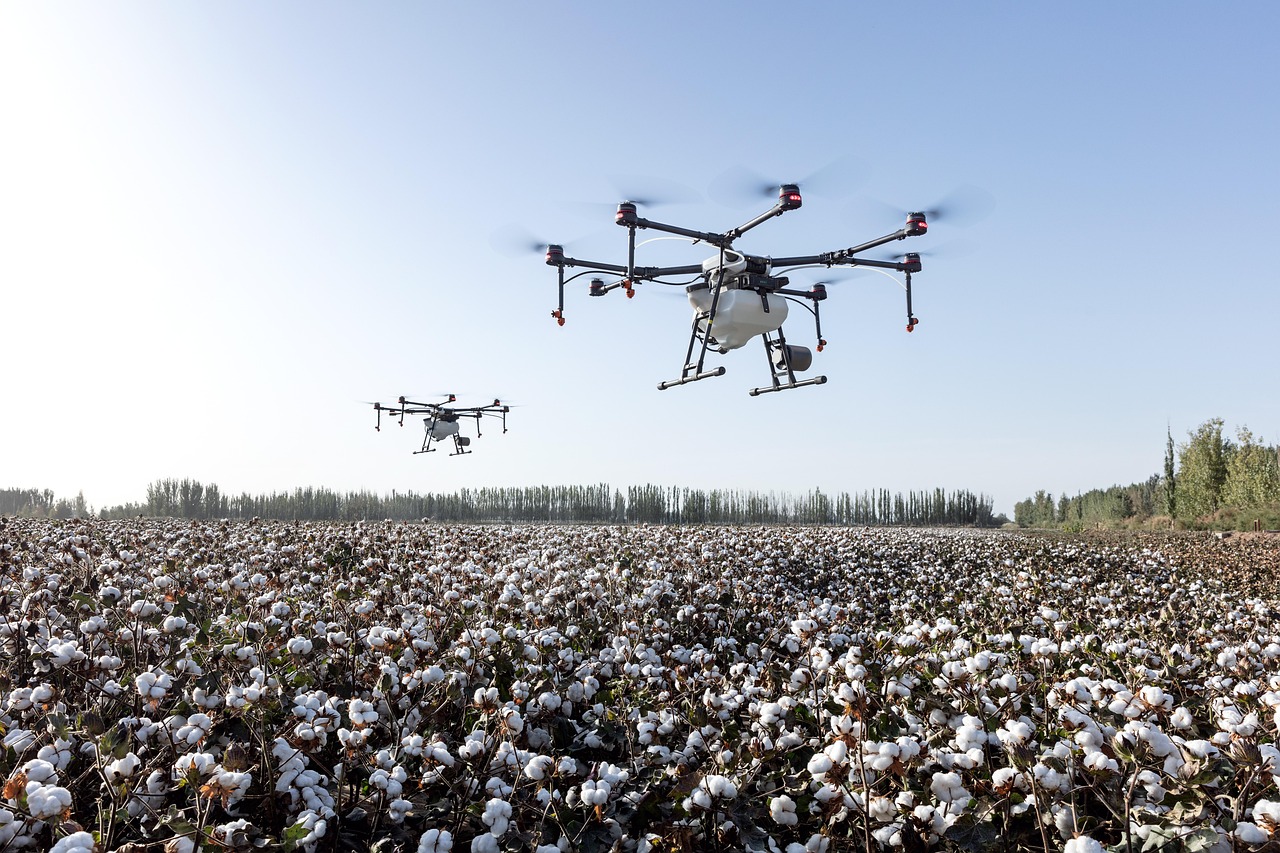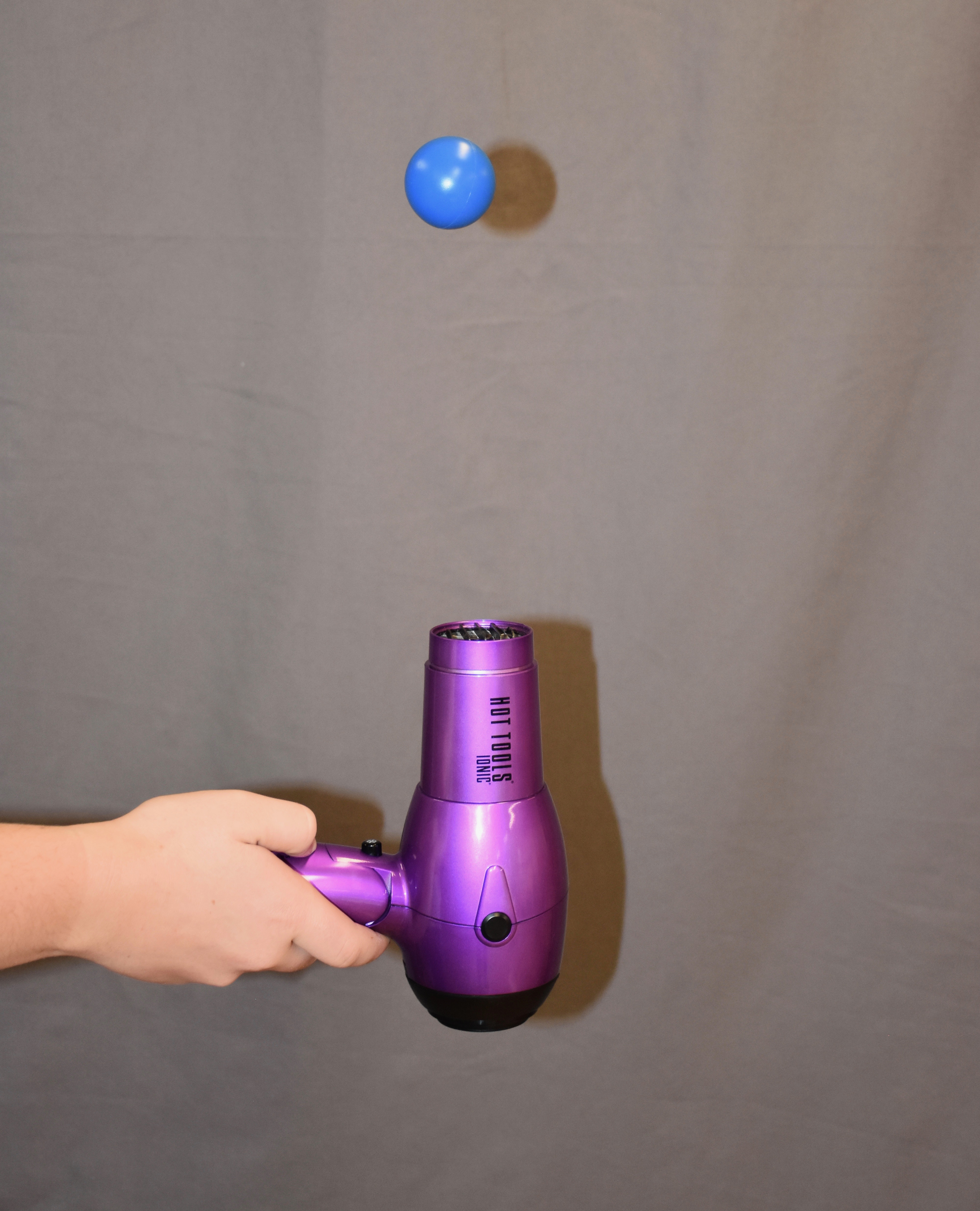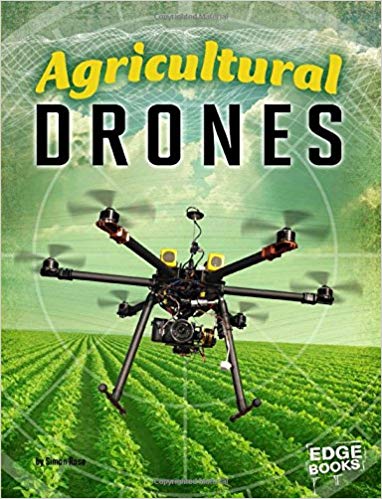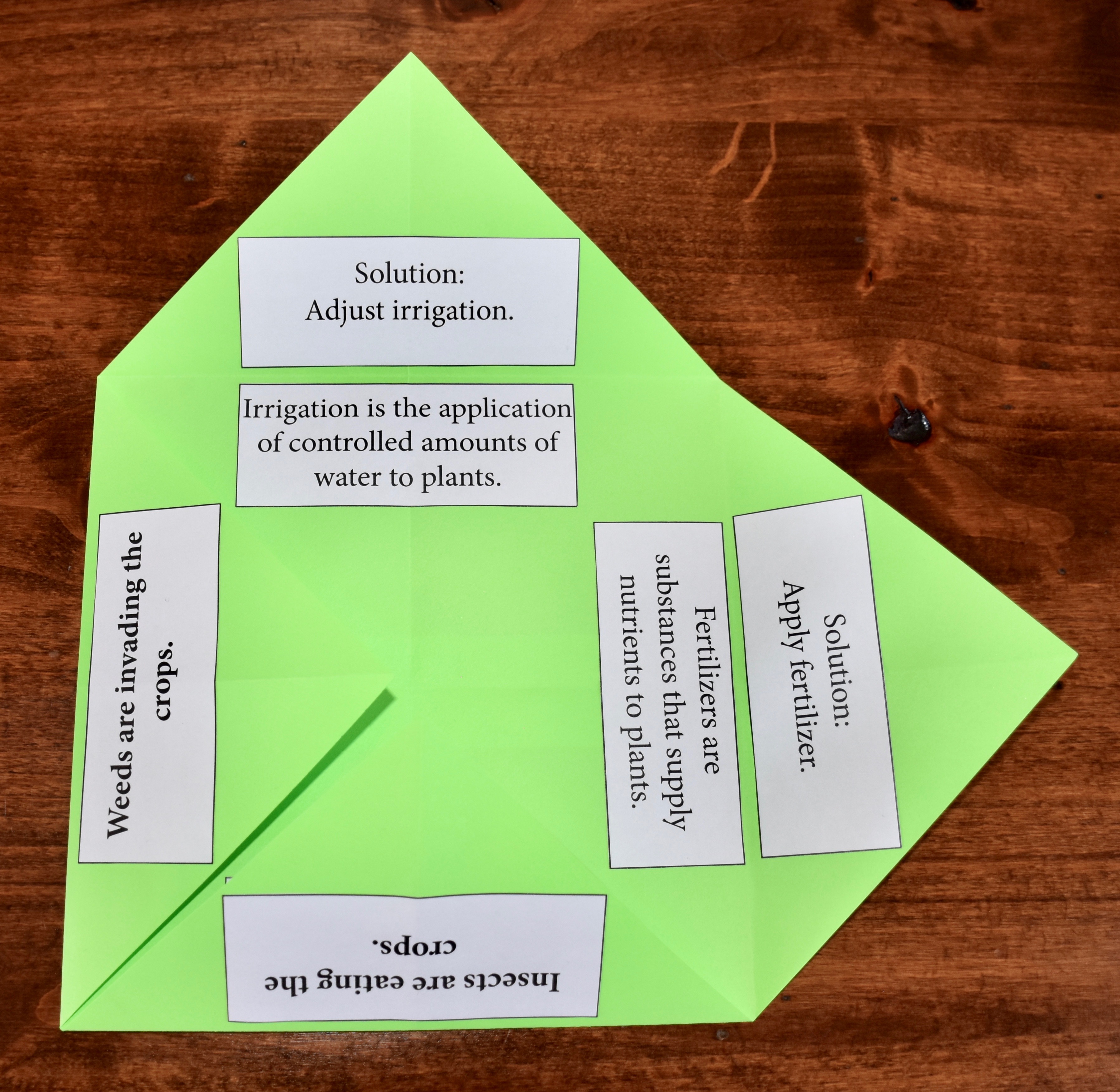Drones in High-Tech Farming (Grades 3-5)
Students discover the science behind how a drone works, explore how drones are used in agriculture, and program and operate a drone for the purpose of surveying a field.

Background
Lesson Activities
Recommended Companion Resources
Credits
Author
Lynn Wallin | National Center for Agricultural Literacy (NCAL)
Sources
- http://www.thedrive.com/tech/18456/drones-in-agriculture-how-uavs-make-farming-more-efficient
- https://www.microdrones.com/en/content/drones-and-precision-agriculture-the-future-of-farming/
- https://www.dronefly.com/blogs/news/how-are-drones-used-for-agriculture/
- https://www.wired.com/2017/05/the-physics-of-drones/
- http://knowbeforeyoufly.org/learn-the-drone-laws/
- https://www.kqed.org/science/16676/drones-the-newest-water-saving-tool-for-parched-farms
- http://www.softschools.com/facts/technology/drones_facts/3355/
Standards
Texas Content Area Standards
-
ELA: 3.110.5.b.4
Developing and sustaining foundational language skills: listening, speaking, reading, writing, and thinking- fluency. The students reads grade-level text with fluency and comprehension. The student is expected to use appropriate fluency (rate, accuracy, and prosody) when reading grade-level text.
- ELA: 3.b.4: Developing and sustaining foundational language skills: listening, speaking, reading, writing, and thinking- fluency. The students reads grade-level text with fluency and comprehension. The student is expected to use appropriate fluency (rate, accuracy, and prosody) when reading grade-level text.
-
ELA: 3.110.5.b.6
Comprehension skills: listening speaking, reading, writing and thinking using multiple texts. The student uses metacognitive skills to both develop and deepen comprehension of increasingly complex texts.
- ELA: 3.6.G: The student is expected to evaluate details read to determine key ideas.
- ELA: 3.6.H: The student is expected to synthesize information to create new understanding.
-
ELA: 3.110.5.b.7
Response skills: listening, speaking, reading, writing, and thinking using multiple texts. The student responds to an increasingly challenging variety of sources that are read, heard, or viewed.
- ELA: 3.7.F: The student is expected to respond using newly acquired vocabulary as appropriate.
-
ELA: 4.110.6.b.1
Developing and sustaining foundational language skills: listening, speaking, discussion, and thinking- oral language. The students develops oral language through listening, speaking, and discussion.
- ELA: 4.1.C: The student is expected to express an opinion supported by accurate information, employing eye contact, speaking rate, volume, enunciation and the conventions of language to communicate ideas effectively.
- ELA: 4.1.D: The student is expected to work collaboratively with other to develop a plan of shared responsibilities.
-
ELA: 4.110.6.b.4
Developing and sustaining foundational language skills: listening, speaking, reading, writing, and thinking- fluency. The students reads grade-level text with fluency and comprehension. The student is expected to use appropriate fluency (rate, accuracy, and prosody) when reading grade-level text.
- ELA: 4.b.4: Developing and sustaining foundational language skills: listening, speaking, reading, writing, and thinking- fluency. The students reads grade-level text with fluency and comprehension. The student is expected to use appropriate fluency (rate, accuracy, and prosody) when reading grade-level text.
-
ELA: 4.110.6.b.6
Comprehension skills: listening, speaking, reading, writing and thinking using multiple texts. The student uses metacognitive skills to both develop and deepen comprehension of increasingly complex texts.
- ELA: 4.6.G: The student is expected to evaluate details read to determine key ideas.
- ELA: 4.6.H: The student is expected to synthesize information to create new understanding.
-
ELA: 4.110.6.b.7
Response skills: listening, speaking, reading, writing, and thinking using multiple texts. The student responds to an increasingly challenging variety of sources that are read, heard, or viewed.
- ELA: 4.7.F: The student is expected to respond using newly acquired vocabulary as appropriate.
-
ELA: 5.110.7.b.1
Developing and sustaining foundational language skills: listening, speaking, discussion, and thinking- oral language. The students develops oral language through listening, speaking, and discussion.
- ELA: 5.1.D: The student is expected to work collaboratively with others to develop a plan of shared responsibilities.
-
ELA: 5.110.7.b.4
Developing and sustaining foundational language skills: listening, speaking, reading, writing, and thinking- fluency. The students reads grade-level text with fluency and comprehension. The student is expected to use appropriate fluency (rate, accuracy, and prosody) when reading grade-level text.
- ELA: 5.b.4: Developing and sustaining foundational language skills: listening, speaking, reading, writing, and thinking- fluency. The students reads grade-level text with fluency and comprehension. The student is expected to use appropriate fluency (rate, accuracy, and prosody) when reading grade-level text.
-
ELA: 5.110.7.b.6
Comprehension skills: listening, speaking, reading, writing, and thinking using multiple texts. The student uses metacognitive skills to both develop and deepen comprehension of increasingly complex texts.
- ELA: 5.6.G: The student is expected to evaluate details read to determine key ideas.
- ELA: 5.6.H: The student is expected to synthesize information to create new understanding.
-
ELA: 5.110.7.b.7
Response skills: listening, speaking, reading, writing, and thinking using multiple texts. The student responds to an increasingly challenging variety of sources that are read, heard, or viewed.
- ELA: 5.7.F: The student is expected to respond using newly acquired vocabulary as appropriate.
-
Science: 3.112.14.b.6
Force, motion, and energy. The student knows that forces cause change and that energy exists in many forms.
- Science: 3.112.14.b.6.C: The student is expected to observe forces such as magnetism and gravity acting on objects.
-
Science: 4.112.15.b.6
Force, motion, and energy. The student knows that forces cause change and that energy exists in many forms and can be observed in cycles, patterns, and systems.
- Science: 4.6.D: The student is expected to design a descriptive investigation to explore the effect of force on an object such as a push or a pull, gravity, friction, or magnetism.
-
Science: 5.112.16.b.6
Force, motion, and energy. The student knows that forces cause change and that energy exists in many forms and can be observed in cycles, patterns, and systems.
- Science: 5.6.D: The student is expected to design a simple experimental investigation that tests the effect of force on an object.
-
Social Studies: 3.113.14.c.13
Science, technology, and society. The student understands how individuals have created or invented new technology and affected life in various communities, past and present. The student is expected to:
- Social Studies: 3.113.14.c.13.B: describe the impact of scientific breakthroughs and new technology in computers, pasteurization, and medical vaccines on various communities
-
Social Studies: 3.113.14.c.14
Social studies skills. The student applies critical-thinking skills to organize and use information acquired from a variety of valid sources, including technology. The student is expected to:
- Social Studies: 3.113.14.c.14.C: interpret oral, visual, and print material by sequencing, categorizing, identifying the main idea, distinguishing between fact and opinion, identifying cause and effect, comparing, and contrasting
-
Social Studies: 3.113.14.c.15
Social studies skills. The student communicates in written, oral, and visual forms. The student is expected to:
- Social Studies: 3.113.14.c.15.D: express ideas orally based on knowledge and experiences
-
Social Studies: 4.113.15.c.18
Science, technology, and society. The student understands the impact of science and technology on life in Texas. The student is expected to:
- Social Studies: 4.113.15.c.18.B: describe how scientific discoveries and innovations such as in aerospace, agriculture, energy, and technology have benefited individuals, businesses, and society in Texas
-
Social Studies: 4.113.15.c.19
Social studies skills. The student applies critical-thinking skills to organize and use information acquired from a variety of valid sources, including technology. The student is expected to:
- Social Studies: 4.113.15.c.19.C: analyze information by applying absolute and relative chronology through sequencing, categorizing, identifying cause-and-effect relationships, comparing, contrasting, finding the main idea, summarizing, making generalizations and predictions, and drawing inferences and conclusions;
-
Social Studies: 4.113.15.c.21
Social studies skills. The student communicates in written, oral, and visual forms. The student is expected to:
- Social Studies: 4.113.15.c.21.C: express ideas orally based on research and experiences
-
Social Studies: 5.113.16.c.22
Science, technology, and society. The student understands the impact of science and technology on society in the United States. The student is expected to:
- Social Studies: 5.113.16.c.22.C: explain how scientific discoveries and technological innovations in the fields of medicine, communication, and transportation have benefited individuals and society in the United States
-
Social Studies: 5.113.16.c.23
Social studies skills. The student applies critical-thinking skills to organize and use information acquired from a variety of valid sources, including technology. The student is expected to:
- Social Studies: 5.113.16.c.23.C: analyze information by applying absolute and relative chronology through sequencing, categorizing, identifying cause-and-effect relationships, comparing, contrasting, finding the main idea, summarizing, making generalizations and predictions, and drawing inferences and conclusions
-
Social Studies: 5.113.16.c.25
Social studies skills. The student communicates in written, oral, and visual forms. The student is expected to:
- Social Studies: 5.113.16.c.25.C: express ideas orally based on research and experiences
-
Science: 3.112.5.b.4
Scientific and engineering practices. The student knows the contributions of scientists and recognizes the importance of scientific research and innovation for society. The student is expected to:
- Science: 3.112.5.b.4.B: research and explore resources such as museums, libraries, professional organizations, private companies, online platforms, and mentors employed in a science, technology, engineering, and mathematics (STEM) field to investigate STEM careers
-
Science: 3.112.5.b.7
Force, motion, and energy. The student knows the nature of forces and the patterns of their interactions. The student is expected to:
- Science: 3.112.5.b.7.A: demonstrate and describe forces acting on an object in contact or at a distance, including magnetism, gravity, and pushes and pulls
-
Science: 4.112.6.b.4
Scientific and engineering practices. The student knows the contributions of scientists and recognizes the importance of scientific research and innovation for society. The student is expected to:
- Science: 4.112.6.b.4.A: explain how scientific discoveries and innovative solutions to problems impact science and society
- Science: 4.112.6.b.4.B: research and explore resources such as museums, libraries, professional organizations, private companies, online platforms, and mentors employed in a science, technology, engineering, and mathematics (STEM) field to investigate STEM careers
-
Science: 4.112.6.b.7
Force, motion, and energy. The student knows the nature of forces and the patterns of their interactions. The student is expected to plan and conduct descriptive investigations to explore the patterns of forces such as gravity, friction, or magnetism in contact or at a distance on an object.
- Science: 4.112.6.b.7: Force, motion, and energy. The student knows the nature of forces and the patterns of their interactions. The student is expected to plan and conduct descriptive investigations to explore the patterns of forces such as gravity, friction, or magnetism in contact or at a distance on an object.
-
Science: 5.112.7.b.4
Scientific and engineering practices. The student knows the contributions of scientists and recognizes the importance of scientific research and innovation for society. The student is expected to:
- Science: 5.112.7.b.4.A: explain how scientific discoveries and innovative solutions to problems impact science and society
- Science: 5.112.7.b.4.B: research and explore resources such as museums, libraries, professional organizations, private companies, online platforms, and mentors employed in a science, technology, engineering, and mathematics (STEM) field to investigate STEM careers
-
Science: 5.112.7.b.7
Force, motion, and energy. The student knows the nature of forces and the patterns of their interactions. The student is expected to:
- Science: 5.112.7.b.7.B: design a simple experimental investigation that tests the effect of force on an object in a system such as a car on a ramp or a balloon rocket on a string
-
Technology Applications: 126.8.c.1
Computational thinking--foundations. The student explores the core concepts of computational thinking, a set of problem-solving processes that involve decomposition, pattern recognition, abstraction, and algorithms. The student is expected to:
- Technology Applications: 126.8.c.1.C: develop a plan collaboratively and document a plan that outlines specific steps taken to complete a project
-
Technology Applications: 126.8.c.6
Data literacy, management, and representation--organize, manage, and analyze data. The student uses data to answer questions. The student is expected to analyze data in graphs to identify and discuss trends and inferences.
- Technology Applications: 126.8.c.6: Data literacy, management, and representation--organize, manage, and analyze data. The student uses data to answer questions. The student is expected to analyze data in graphs to identify and discuss trends and inferences
-
Technology Applications: 126.9.c.1
Computational thinking--foundations. The student explores the core concepts of computational thinking, a set of problem-solving processes that involve decomposition, pattern recognition, abstraction, and algorithms. The student is expected to:
- Technology Applications: 126.9.c.1.C: communicate design plans and solutions using a variety of options
-
Technology Applications: 126.9.c.6
Data literacy, management, and representation--organize, manage, and analyze data. The student uses data to answer questions. The student is expected to use digital tools to transform and make inferences about data to answer a question.
- Technology Applications: 126.9.c.6: Data literacy, management, and representation--organize, manage, and analyze data. The student uses data to answer questions. The student is expected to use digital tools to transform and make inferences about data to answer a question
-
Technology Applications: 126.10.c.1
Computational thinking--foundations. The student explores the core concepts of computational thinking, a set of problem-solving processes that involve decomposition, pattern recognition, abstraction, and algorithms. The student is expected to:
- Technology Applications: 126.10.c.1.A: decompose a real-world problem into smaller, manageable subproblems using graphic organizers such as learning maps, concept maps, or other representations of data
-
Technology Applications: 126.10.c.6
Data literacy, management, and representation--organize, manage, and analyze data. The student uses data to answer questions. The student is expected to use digital tools to analyze and transform data and make inferences to answer questions.
- Technology Applications: 126.10.c.6: Data literacy, management, and representation--organize, manage, and analyze data. The student uses data to answer questions. The student is expected to use digital tools to analyze and transform data and make inferences to answer questions
 Take the class to a large field free of trees or overhead wires or into a gymnasium.
Take the class to a large field free of trees or overhead wires or into a gymnasium. Place a ping pong ball into the stream of air. Ask the students, "Why is the ping pong ball floating?" (The force of the air pushing up on the ball is equal to the force of gravity pushing down on the ball, so the ball is hovering in the air.)
Place a ping pong ball into the stream of air. Ask the students, "Why is the ping pong ball floating?" (The force of the air pushing up on the ball is equal to the force of gravity pushing down on the ball, so the ball is hovering in the air.)
 Handout an
Handout an  the crops.
the crops.